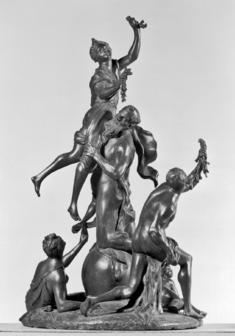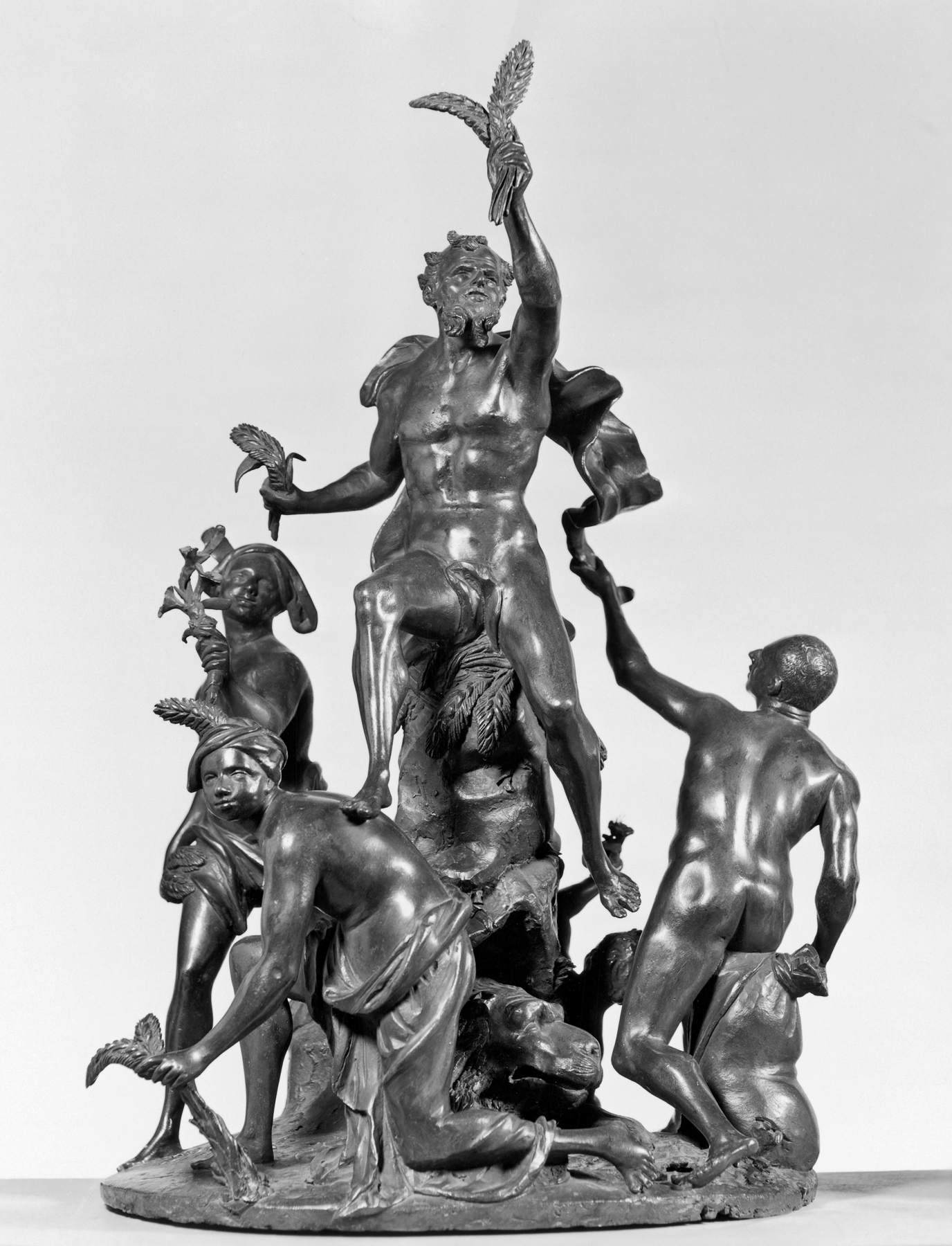Allegorical Groups Representing the Four Parts of the World: Africa
(Baroque Europe )
In early modern Europe, the earth was generally understood to be divided into four parts: Europe, America, Asia, and Africa. From the 1500s to the 1800s, the symbolic depiction (“allegory”) of these four geographical areas was widely popular and often known as “The Allegory of the Four Continents.” Artists used generalized representations of men and women holding or wearing items that European viewers understood to represent the “continent” or part of the world from which they came. In this grouping the figure of Europe contrasts markedly in complexity with the others, of which the artist and his patrons knew much less.
Africa: The central motif of a man holding sheaves of grain reflects the fact that from antiquity, North Africa was an important source of grain for Europe. In contrast to this abundance, a lion and a snake represent the dangers posed by wildlife that both thrilled and frightened Europeans.
Little is known about Francesco Bertos, a highly original artist who created a considerable number of complicated pyramidal groups in a distinctive, ingenious style that mirrors the lightness and airiness of contemporary Rococo painting in France.
Provenance
Provenance (from the French provenir, 'to come from/forth') is the chronology of the ownership, custody, or location of a historical object. Learn more about provenance at the Walters.
Spiradon, Paris; Jacques Seligmann and Co., Inc., New York, Sale, February 17, 1917; Henry Walters, Baltimore, 1917, by purchase; Walters Art Museum, 1931, by bequest.
Conservation
| Date | Description | Narrative |
|---|---|---|
| 7/15/1974 | Treatment | cleaned; examined for condition |
Geographies
Italy, Padua
(Place of Origin)
Italy, Venice (Place of Origin)
Measurements
H: 25 3/8 × W: 18 1/8 × D: 12 7/8 in. (64.5 × 46 × 32.7 cm)
Credit Line
Acquired by Henry Walters, 1917
Location in Museum
Accession Number
In libraries, galleries, museums, and archives, an accession number is a unique identifier assigned to each object in the collection.
In libraries, galleries, museums, and archives, an accession number is a unique identifier assigned to each object in the collection.
54.658
Do you have additional information?
Related Objects



